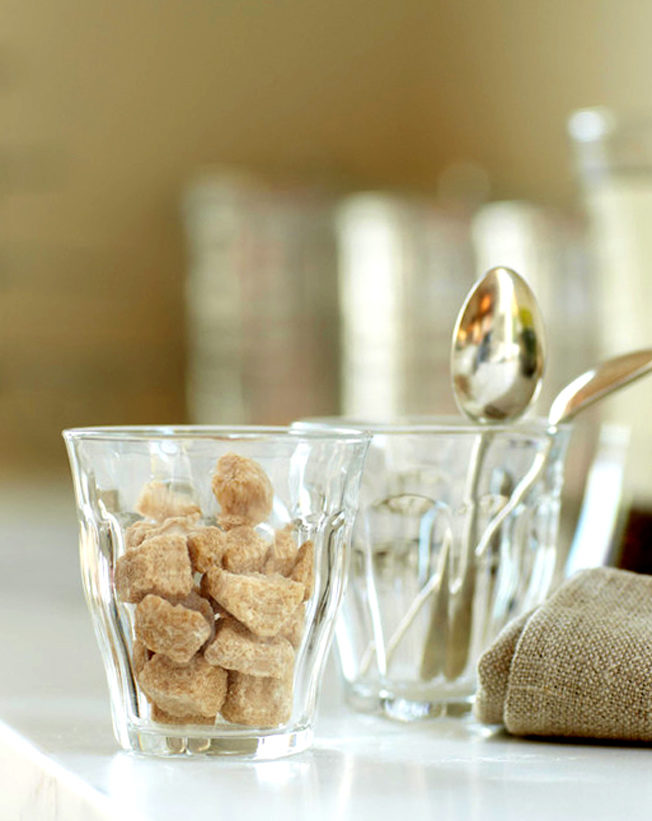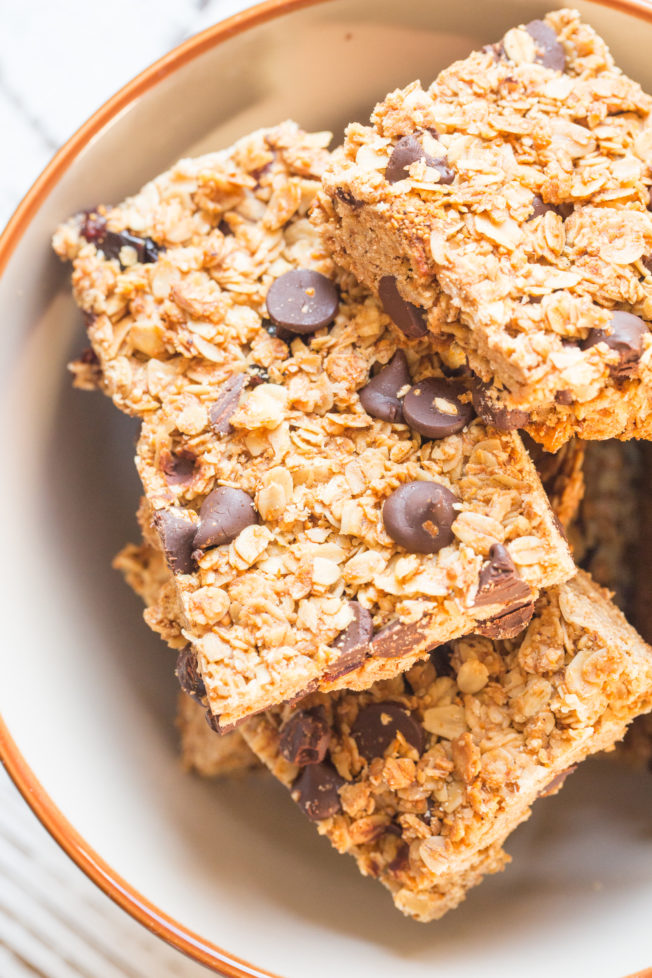
As much as we adore the likes of peanut butter and jelly doughnuts and coconut cream pie, it’s hard to ignore the increasing amount of science that suggests we should be more moderate about our sugar consumption.
“Sugar has been linked to chronic illnesses such as diabetes, fatty liver disease, even cancer,” author and health advocate Jennifer Tyler Lee told us on a recent visit to the Williams Sonoma Test Kitchen. Jennifer, who’s the creator of The 52 New Foods Challenge, has been working with the Sugar Science team at the University of California, San Francisco to figure out how to make family meals delicious using just a fraction of the amount of sugar that Americans have been consuming daily. She stopped by Williams Sonoma headquarters to share her tips for reduced-sugar cooking (and a beloved recipe!).

Jennifer Tyler Lee’s granola bar recipe (below) contains less than 4 grams of sugar per serving.
“Kids are eating three times the daily recommendation of sugar,” Jennifer told us, adding that the problem doesn’t just lie with fountain drinks and desserts. “You’re eating sugar when you don’t even know you’re eating it.”
Some lesser-known culprits? Whole wheat bread, mustard, yogurt, and barbecue sauce are all prime examples of stealthy sugar sources. And while consumers have begun to move away from refined white sugar to more natural or lower-glycemic caloric sweeteners such as honey, maple syrup or agave nectar, she points out that this still doesn’t solve the problem, adding, “Once sugar’s in your body, it’s all the same.”
Her mission is to encourage families to slash the quantity of sugar they eat instead. Below are the American Heart Association’s daily sugar recommendations for adults and kids:
- Women: 6 teaspoons (about 24 grams)
- Menu: 9 teaspoons (about 36 grams)
- Children: 3-6 teaspoons (12-25 grams), depending on weight and size
Jennifer Tyler Lee’s Tips for Slashing Sugar Intake
- Make as much from scratch as you can. When you make components like mayonnaise and tomato sauce from scratch, you control precisely what goes into your food, and that includes sugar. Preparing your own food means you don’t have to worry about hidden sources of sugar in breads, sauces, condiments and more.
- Learn to recognize other names for sugar. Come July 2018, the Food and Drug Administration will begin requiring that most packaged foods include a separate line detailing the amount of added sugar. Until then, avoid packaged foods that list “sugar” under the ingredients, and know that manufacturers often label sugar by other names, including malt syrup, fruit nectar, dextrose and lactose.
- In lieu of sweetener, use other whole foods to boost flavor and nutritional value. When Jennifer prepares her version of chocolate mousse, she replaces heavy cream with coconut milk and ripe avocado, which not only lends a creaminess but also adds heart-healthy unsaturated fat into the mix. When making granola, she’ll throw in some ground flaxseed for extra nuttiness as well as brain-boosting omega-3 fatty acids.
- When possible, replace the need for added sugar with fresh fruits and vegetables. Certain dishes, like chili, Korean barbecue and chicken parmesan are characterized by a pleasant sweetness. Rather than turning to sugar, reach for fruits and vegetables: Jennifer adds carrots to marinara sauce, pear or macerated pineapple in Asian marinades, or fresh-squeezed orange juice to teriyaki sauce. Although fruits and vegetables contain sugar, they also naturally come packaged with healthy fibers.
- Know how and when to indulge. It wouldn’t be realistic to never indulge, but when you do, try to enjoy it strategically. Saving the biggest splurges for weekends works particularly well for families with small kids, as it coincides with birthday parties and other special events. Another word of caution: portions. “Just because you’ve cut the sugar,” Jennifer says, “doesn’t mean you get to have double the portion!”
Chewy Chocolate Chip Granola Bars
These chewy homemade granola bars are a go-to snack for school or sports. Toasted oats, a light touch of honey, and dark chocolate chips create a delicious flavor reminiscent of your favorite store bought granola bars. Feel free to switch up the mix-ins. This recipe works equally well with dried fruit, seeds, or nuts. The possibilities are endless.
Prep time: 10 minutes
Cook time: 20 minutes
Total time: 30 minutes
Contains <4 g added sugar; 5 g total sugar
Ingredients
- ¼ cup unsalted butter
- 2 cups rolled oats
- ½ cup unsweetened shredded coconut
- ½ teaspoon cinnamon
- ½ teaspoon kosher salt
- 3 tablespoons honey
- 2 tablespoons brown sugar
- 1 teaspoon vanilla
- 1 large egg, lightly beaten
- ¼ cup dark chocolate chips
Directions
1. Preheat oven to 300ºF. Line a 9×9-inch baking pan with parchment paper.
2. In a large saucepan, melt the butter over medium heat. Add the oats and stir until the they begin to turn golden brown, about 5 minutes. Transfer to a large mixing bowl. Mix in the shredded coconut, cinnamon, and salt.
3. Wipe the saucepan clean, then add the honey, brown sugar, and vanilla and bring to a gentle boil. As soon as the mixture begins bubbling, pour over the oat mixture and mix gently until fully combined. Stir in the egg.
4. Let cool slightly, then mix in the chocolate chips.
5. Firmly press the mixture into the lined baking pan.
6. Bake for 20 minutes. Let cool completely before cutting into bars. Makes 20 bars.
Recipe courtesy Jennifer Tyler Lee/The 52 New Foods Challenge

1 comment
Can coconut be replaced with a different grain? What recipe adjustment would need to be made?